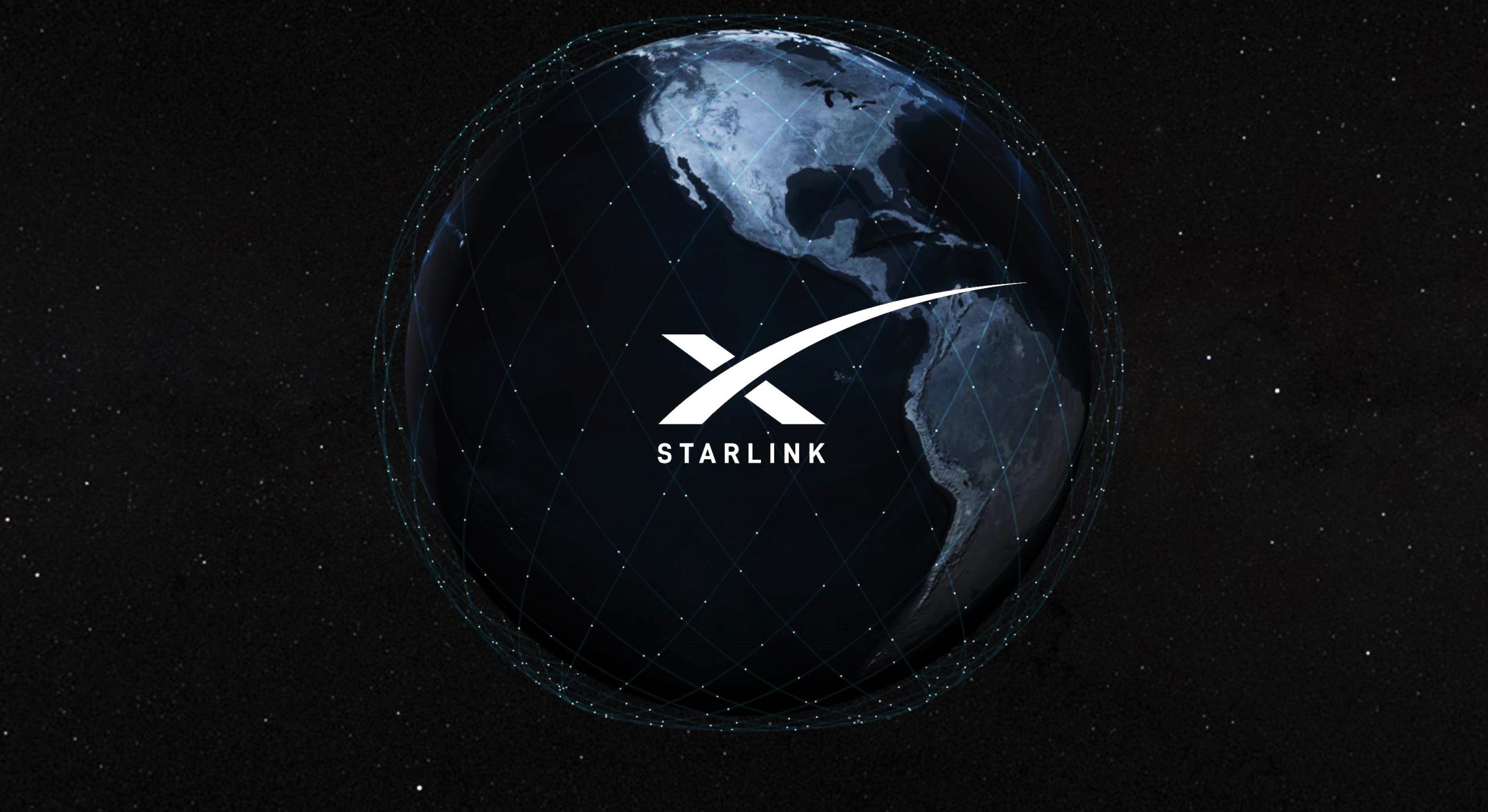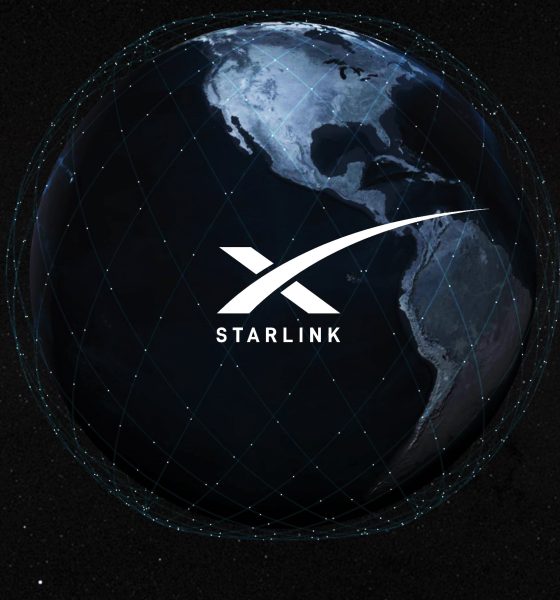

News
SpaceX reportedly refused to move Starlink satellite, provoking odd space agency tweets [updated]
The European Space Agency (ESA) has published an unusual press release – in the form of a Twitter thread – specifically blaming SpaceX’s nascent Starlink constellation for a collision avoidance maneuver recently performed by Aeolus, a scientific spacecraft in low Earth orbit (LEO). SpaceX reportedly refused to move its Starlink satellite, triggering the maneuver.
SpaceX launched an extensive Starlink beta test on May 23rd, 2019, placing an unprecedented 60 satellites in LEO. Discussed earlier today on Teslarati, 50 of those 60 satellite prototypes have reached their final 550 km (340 mi) orbits and are functioning as intended, while 5 have paused their orbit-raising, 3 have been declared dead, and 2 are intentionally lowering their orbits as an end-of-life simulation.
Update: SpaceX has released an official statement on the matter.
“Our Starlink team last exchanged an email with the Aeolus operations team on August 28, when the probability of collision was only in the 2.2e-5 range (or 1 in 50k), well below the 1e-4 (or 1 in 10k) industry standard threshold and 75 times lower than the final estimate. At that point, both SpaceX and ESA determined a maneuver was not necessary. Then, the U.S. Air Force’s updates showed the probability increased to 1.69e-3 (or more than 1 in 10k) but a bug in our on-call paging system prevented the Starlink operator from seeing the follow on correspondence on this probability increase – SpaceX is still investigating the issue and will implement corrective actions. However, had the Starlink operator seen the correspondence, we would have coordinated with ESA to determine best approach with their continuing with their maneuver or our performing a maneuver.”
–SpaceX, 09/03/2019
Additionally, Starlink satellites have already reportedly performed 16 autonomous collision avoidance maneuvers (sans human operator interference) and SpaceX confirmed that the satellite ESA was worried about is fully operational while it continues its deorbit maneuver.
On one hand, ESA’s description of events is bizarre and dubious, at points. ESA Operations tweeted that “it is very rare to perform collision avoidance maneuvers with active satellites”, while the very next tweet stated that “ESA performed 28 collision avoidance maneuvers [in 2018]”, meaning that the procedure is roughly biweekly for ESA alone.
Meanwhile, Matt Desch – CEO of Iridium, the owner and operator of one of the largest LEO constellations ever flown – stated that its Iridium NEXT satellites perform similar maneuvers weekly, without the need to “put out a press release to say who [Iridium] maneuvered around”. In simple terms, collision avoidance maneuvers are extremely common and extremely routine and are a fundamental part of operating satellites on orbit – be it one, ten, or ten thousand.
However, spaceflight journalist Jonathan O’Callaghan was told by sources in ESA that the space agency had directly contacted SpaceX with concerns about a possible Starlink-Aeolus collision and the company refused to move their spacecraft in cooperation. This left ESA’s Aeolus to perform the maneuver.
From the perspective of O’Callaghan’s sourced information, SpaceX certainly appears to be in the wrong in this case. However, the current story is extremely patchy, and more information is needed to paint a true-to-life picture of events. Was SpaceX’s refusal to move based on an inability to move one of the two satellites it is intentionally deorbiting? Is the company simply confident in what it has described as a suite of autonomous collision avoidance hardware and software installed on each Starlink satellite?
Either way, if SpaceX actually is/was as terse and uncommunicative as O’Callaghan’s sources have painted the company, it is an extremely bad look. For SpaceX to successfully operate hundreds of Starlink satellites, let alone its constellation’s full ~11,800, good spaceflight stewardship and hand-in-hand cooperation with other major (and minor) operators is an absolute necessity. If SpaceX acts like the bully in the room and simply ignores or avoids cooperation and fails to take responsibility and help maintain current standards of collision avoidance, the company will very quickly find itself surrounded by newly made enemies like ESA.
Teslarati has reached out to SpaceX for comment and will update this article with all relevant information.
Check out Teslarati’s Marketplace! We offer Tesla accessories, including for the Tesla Cybertruck and Tesla Model 3.

News
SpaceX shades airline for seeking contract with Amazon’s Starlink rival

SpaceX employees, including its CEO Elon Musk, shaded American Airlines on social media this past weekend due to the company’s reported talks with Amazon’s Starlink rival, Leo.
Starlink has been adopted by several airlines, including United Airlines, Qatar Airways, Hawaiian Airlines, WestJet, Air France, airBaltic, and others. It has gained notoriety as an extremely solid, dependable, and reliable option for airline travel, as traditional options frequently cause users to lose connection to the internet.
Many airlines have made the switch, while others continue to mull the options available to them. American Airlines is one of them.
A report from Bloomberg indicates the airline is thinking of going with a Starlink rival owned by Amazon, called Leo. It was previously referred to as Project Kuiper.
American CEO Robert Isom said (via Bloomberg):
“While there’s Starlink, there are other low-Earth-orbit satellite opportunities that we can look at. We’re making sure that American is going to have what our customers need.”
Isom also said American has been in touch with Amazon about installing Leo on its aircraft, but he would not reveal the status of any discussions with the company.
The report caught the attention of Michael Nicolls, the Vice President of Starlink Engineering at SpaceX, who said:
“Only fly on airlines with good connectivity… and only one source of good connectivity at the moment…”
CEO Elon Musk replied to Nicolls by stating that American Airlines risks losing “a lot of customers if their connectivity solution fails.”
American Airlines will lose a lot of customers if their connectivity solution fails
— Elon Musk (@elonmusk) December 14, 2025
There are over 8,000 Starlink satellites in orbit currently, offering internet coverage in over 150 countries and territories globally. SpaceX expands its array of satellites nearly every week with launches from California and Florida, aiming to offer internet access to everyone across the globe.
Currently, the company is focusing on expanding into new markets, such as Africa and Asia.
News
Tesla Model Y Standard stuns in new range test, besting its Premium siblings
Tesla’s newer vehicles have continued to meet or exceed their EPA estimates. This is a drastic change, as every 2018-2023 model year Tesla that Edmunds assessed did not meet its range estimates.

The Tesla Model Y Standard stunned in a new range test performed by automotive media outlet Edmunds, besting all of its Premium siblings that are more expensive and more luxurious in terms of features.
Testing showed the Model Y Standard exceeded its EPA-estimated range rating of 321 miles, as Edmunds said it is the “longest-range Model Y that we’ve ever put on our loop.” In the past, some vehicles have come up short in comparison with EPA ranges; for example, the Model Y’s previous generation vehicle had an EPA-estimated range of 330 miles, but only drove 310.
Additionally, the Launch Series Model Y, the first configuration to be built in the “Juniper” program, landed perfectly on the EPA’s range estimates at 327 miles.
It was also more efficient than Premium offerings, as it utilized just 22.8 kWh to go 100 miles. The Launch Series used 26.8 kWh to travel the same distance.
It is tested using Edmunds’ traditional EV range testing procedure, which follows a strict route of 60 percent city and 40 percent highway driving. The average speed throughout the trip is 40 MPH, and the car is required to stay within 5 MPH of all posted speed limits.
Each car is also put in its most efficient drive setting, and the climate is kept on auto at 72 degrees.
“All of this most accurately represents the real-world driving that owners do day to day,” the publication says.
With this procedure, testing is as consistent as it can get. Of course, there are other factors, like temperature and traffic density. However, one thing is important to note: Tesla’s newer vehicles have continued to meet or exceed their EPA estimates. This is a drastic change, as every 2018-2023 model year Tesla that Edmunds assessed did not meet its range estimates.
Tesla Model Y Standard vs. Tesla Model Y Premium
Tesla’s two Model Y levels both offer a great option for whichever fits your budget. However, when you sit in both cars, you will notice distinct differences between them.
The Premium definitely has a more luxurious feel, while the Standard is stripped of many of the more premium features, like Vegan Leather Interior, acoustic-lined glass, and a better sound system.
You can read our full review of the Model Y Standard below:
Tesla Model Y Standard Full Review: Is it worth the lower price?
News
Xpeng CEO: Tesla FSD 14.2 has developed “near-Level 4” performance
While acknowledging that imperfections remain, the Xpeng CEO said FSD’s current iteration significantly surpasses last year’s capabilities.

Xpeng CEO He Xiaopeng has offered fresh praise for Tesla’s Full Self-Driving (FSD) system after revisiting Silicon Valley more than a year after his first hands-on experience.
Following extended test drives of Tesla vehicles running the latest FSD software, He stated that the system has made major strides, reinforcing his view that Tesla’s approach to autonomy is indeed the proper path towards autonomy.
Tesla FSD closing in on Level 4 driving
During his visit, He test-drove a Tesla equipped with FSD V14.2. He also rode in a Tesla Robotaxi. Over roughly five hours of driving across Silicon Valley and San Francisco, He said both vehicles delivered consistent and reassuring performance, a notable improvement from his experience a year earlier.
According to He, Tesla’s FSD has evolved from a smooth Level 2 advanced driver assistance system into what he described as a “near-Level 4” experience in terms of capabilities. While acknowledging that imperfections remain, the Xpeng CEO said FSD’s current iteration significantly surpasses last year’s capabilities. He also reiterated his belief that Tesla’s strategy of using the same autonomous software and hardware architecture across private vehicles and robotaxis is the right long-term approach, allowing users to bypass intermediate autonomy stages and move closer to Level 4 functionality.
He previously tested Tesla’s FSD V12.3.6 and Waymo vehicles in California in mid-2024, noting at the time that Waymo performed better in dense urban environments like San Francisco, while Tesla excelled in Silicon Valley and on highways.
Xpeng’s ambitious autonomy roadmap and internal challenge
The Silicon Valley visit also served as a benchmark for Xpeng’s own autonomy ambitions. He stated that Xpeng is looking to improve its VLA autonomous driving system to match the performance of Tesla’s FSD V14.2 within China by August 30, 2026. Xpeng is poised to release its VLA 2.0 smart driving software next quarter, though He cautioned that the initial version will not be able to match FSD V14.2’s capabilities, as noted in a CNEV Post report.
He also added a personal twist to the goal, publicly challenging Xpeng’s autonomous driving team. If the performance target is met by the 2026 deadline, the CEO stated that he will approve the creation of a Chinese-style cafeteria for Xpeng’s Silicon Valley team. If not, Liu Xianming, head of Xpeng’s autonomous driving unit, has pledged to run naked across the Golden Gate Bridge, He noted.








